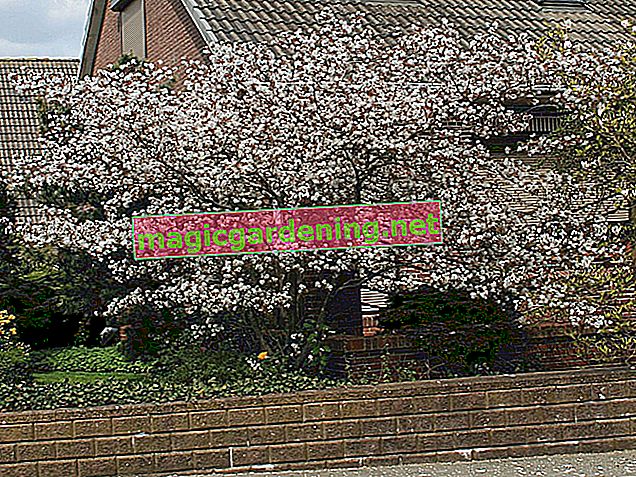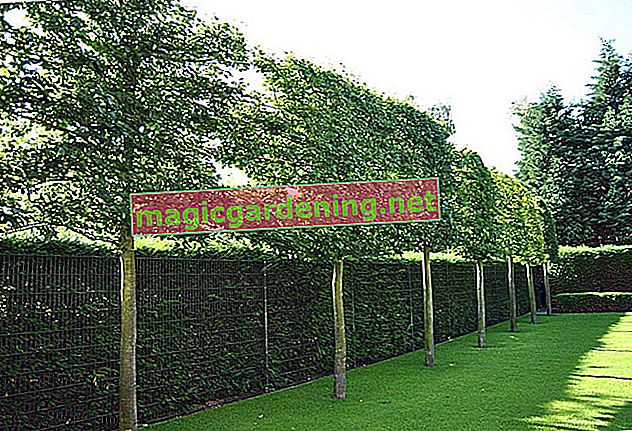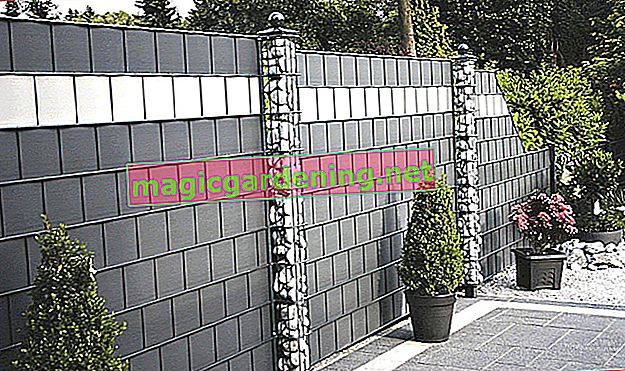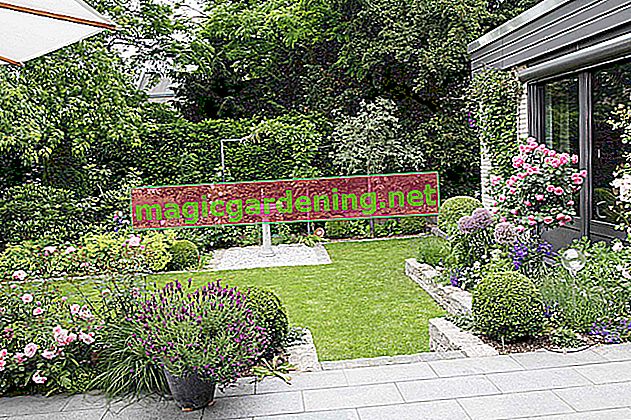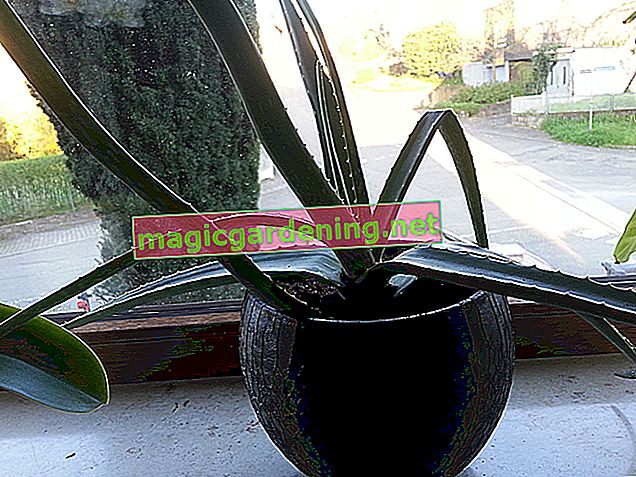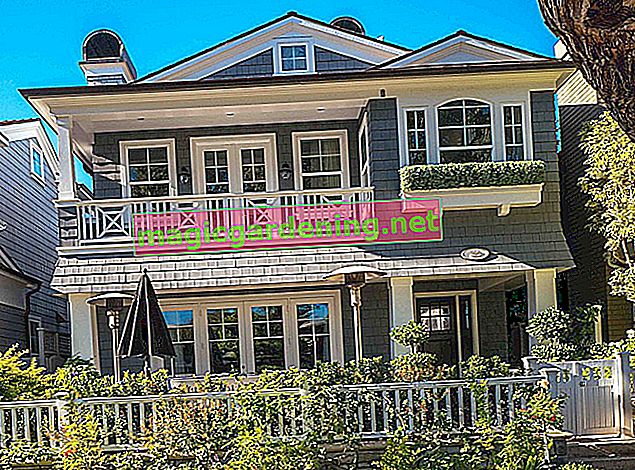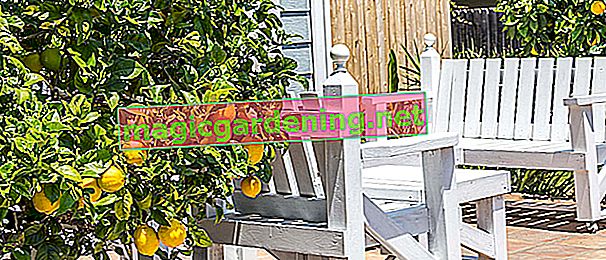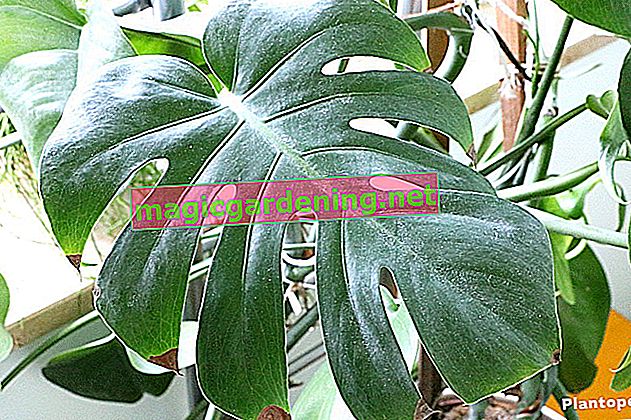
Plant colored nettles correctly
Only plant colored nettles in the bed when the temperatures are consistently above 12-14 degrees Celsius. The leafy beauties can be planted in the pot all year round, as long as the move to the balcony takes place in mid-May at the earliest. Please pay special attention to the following aspects:
- Thoroughly loosen up the bedding soil, weed it and enrich it with acidic leaf compost or standard soil
- Use bog soil with a few potsherds as drainage over the floor opening in the pot and balcony box
- Before potting, place the root ball in lime-free water until no more air bubbles rise
- Do not plant a young colored nettle deeper than just below the first pair of leaves
also read
- Is the colored nettle poisonous?
- Does the colored nettle bloom?
- Popular houseplants: the colored nettle
After you have poured plenty of water on the tropical grace, we recommend a layer of mulch made of leaves or grass clippings.
Care tips
The professional care of a colored nettle is primarily based on an ample supply of water and nutrients. All other measures follow this. How to do it right:
- Pour regularly and spray with soft water
- From May to September, fertilize weekly with liquid fertilizer for bog plants
- Shoot too long shoots consistently to a maximum of 50 cm for bushy growth
If the mercury column drops below 15 degrees in autumn, put colored nettles in the pot or balcony box. Cutting back by one to two thirds is now an advantage. In the bright, warm winter quarters, you pour reduced and apply diluted liquid fertilizer every 4-6 weeks.
Continue reading
Which location is suitable?
The choice of the location plays a key role in professional cultivation. In order for the tropical foliage plant to reach its floral zenith, these basic conditions are important:
- Bright, sunny location without blazing sun at noon
- Warm and protected, preferably with high humidity
- Temperature minimum of 12-14 degrees Celsius
- Nutrient-rich, freshly moist soil with a neutral to slightly acidic pH value
Since Solenostemon cannot tolerate the cold, they move to the sunny balcony at the earliest in May or are planted in the bed.
Continue reading
What soil does the plant need?
Choose a nutrient-rich bog soil as the potting substrate, as this has the necessary neutral to slightly acidic pH. Alternatively, the use of standard soil based on compost is conceivable. The addition of lava granulate (€ 13.76 on Amazon *) or expanded clay (€ 17.50 on Amazon *) ensures the desired permeability. Cultivated as an annual in the summer bed, enrich humus-rich, freshly moist soil with acidic leaf compost or rhododendron soil so that the colored nettle develops splendidly.
When is the flowering time?
From June to October inconspicuous panicles of flowers rise above the magnificent foliage. Since these contribute little to the decorative appearance, experienced gardeners cut off the stems. Thanks to this foresight, you save a colored nettle the effort of growing seed heads.
Cut the colored nettle correctly
A cut at the right time provides valuable services so that the vigorous multicolored nettle retains its compact habit and does not become bulky. This is how it works:
- From the beginning, always prune the plant to encourage bushy growth
- Consistently cut off the inconspicuous flower panicles
- Before moving to winter quarters, shorten it by one to two thirds
Continuous sharpening does not necessarily require the use of scissors. Grasp the shoot just above a leaf or leaf knot between your thumb and forefinger and snap it off.
Pour the colored nettle
Water your colored nettle abundantly and regularly. The Asian beauty reacts indignantly to dried substrate with short-term leaf shedding. On the sunny balcony or the bright windowsill, this may be necessary every day in summer. Ideally, use soft water to prevent the pH in the soil from increasing. Indulge the tropical foliage plant from time to time with a gentle spray of lime-free water in the early morning or in the evening.
Fertilize the colored nettle properly
The nutritional requirements of a colored nettle are at a high level. In potted cultivation, apply a liquid fertilizer for bog plants every week from May to September. Alternatively, apply a slow release fertilizer in the form of sticks, cones or granules in April and July. If the Solenostemon winters on the warm window sill, a dose of liquid fertilizer every 4-6 weeks is sufficient.
Overwinter
If the temperatures drop below 15 degrees Celsius in autumn, put colored nettles in the pot and balcony box. In the bright, warm winter quarters or on the sunny windowsill, the ornamental foliage plants linger until the next spring. Adjust the water supply to the reduced demand. It is fertilized every 4-6 weeks with diluted liquid fertilizer. In April, repot the overwintered leaf beauties in fresh substrate and gradually get used to more sunshine and warmer temperatures.
Continue reading
Propagate colored nettles
You can easily multiply a colored nettle with cuttings. To do this, cut off head cuttings with a length of 10-12 cm in late summer. The lower part is defoliated so that the cuttings can be used in pots with poor substrate. A plastic hood creates a warm, humid microclimate that promotes rooting. Keep the soil constantly moist in the partially shaded, warm window seat. You will cultivate a vital young plant by next spring.
Continue reading
Colored nettle in the pot
Use bog soil or standard soil as a substrate in the pot to meet the need for a slightly acidic pH value. To prevent waterlogging later, place a pottery shard over the opening in the floor. In the sunny, warm spot on the balcony or the windowsill, pour the colored nettle abundantly and regularly with soft water. From May to September you fertilize weekly with a low-lime liquid fertilizer. Consistently remove the tips of shoots that are too long, because from 40-50 cm height the plant takes on a sparse habit. In winter, the tropical plant favors a bright location with temperatures not below 15 degrees Celsius.
Is colored nettle poisonous?
The colored nettle is assigned to the slightly poisonous plants. Since the brightly colored leaves could tempt curious children and pets to eat, the decorative leaf plant is not ideal for the family garden. Gardeners who are sensitive to essential oils should carry out planting and maintenance work with protective gloves.
Continue reading
Nice varieties
The colored nettle was formerly known by its botanical name Coleus blumeii. In modern taxonomy, the ornamental leaf plant is referred to as a solenostemon. Since this change was very recent, you will discover the plant under both names in stores.
- Goldmarie: A dream in a velvety, soft golden yellow with greenish ruffled leaf edges; Height of growth 30-60 cm
- Brilliancy: This Solenostemon hybrid sets itself in scene with carmine-red, pale yellow leaves; Height 30-50 cm
- Sunset: A premium variety with reddish leaves adorned with a golden yellow center; Growth height 30-50 cm
- Black Dragon: An impressive beauty with purple-red foliage and a dark, curved border; Growth height 50 cm
- Pink Rainbow: Magnificent festival of colors with copper-red leaves with green margins, veined with carmine red; Growth height 40-60 cm

